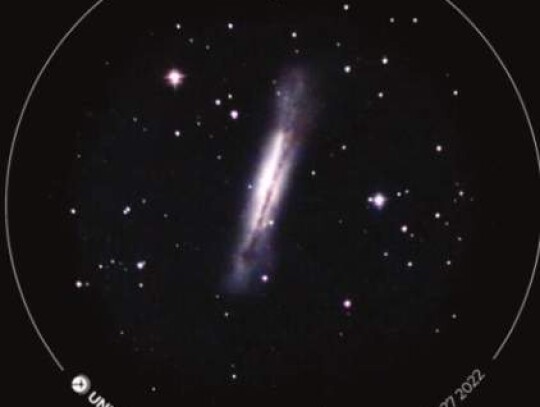“Science has never drummed up quite as effective a tranquilizing agent as a sunny Spring day.” W. Earl Hall as quoted in the Reader’s Digest, 1959 (and I might include a warm starry spring night).
And then there’s always Henry David Thoreau: “As every season seems best to us in its turn, so the coming of spring is like the creation of cosmos out of chaos.”
My favorite astronomy months are April, May and June. March thru May is the Great Realm of Galaxies, and then comes June which whisps in the summer Milky Way with all its gaseous and colorful nebulas and sparkling star clusters.
Here are a few things worth looking for in April. At dawn twilight on the 18th, with a clear horizon, you’ll see an eye-catching string of planets comprising Jupiter, Venus, Mars and Saturn toward the east-southeast. You won’t need dark skies to view this spectacle.
If you’ve been wondering where the evening planets were, well they’ve been hiding behind the sun, and they’re now early morning objects. Watch for the Lyrid meteor shower in the early morning hours of the 22nd. Peak activity should be between 5 and 6:30 a.m. After that time the moon and sun will rise. You should look toward the northeast. Then you’ll see a pretty sunrise afterwards.
On the last morning of April, go outside between 5:30 and 6:30 a.m. to see quite a naked eyesight. Jupiter and Venus (the two brightest planets) will be less than a half degree apart low in the east-southeast. They will be close enough together to see them both in a wide field telescope eyepiece and very pretty in binoculars. The sun will rise about 6:50 a.m. If it’s cloudy that morning try again on May 1. They won’t be much further apart.
I’ve had a devil of a time since about the end of November finding a clear night sky when the moon wasn’t up so I could do some imaging. I’ve averaged about two nights (or more accurately partial nights) a month, and March was the worst. And when it’s “clear,” it’s actually hazy.
Such is the life of an astronomer.
Astronomy and bird watching actually have quite a bit in common. Casual birdwatching and casual astronomy requires little effort really. But serious amateur astronomers spend considerable time and effort, not to mention lost sleep.
It seems reasonable to ask why we do it. Most will find it difficult to explain. Some mention the beauty of the planets, stars and galaxies. Others mention the grandeur of the cosmos and their sense of belonging to it.
I would mention that contemplation of the stars draws people closer to one another by awakening our common status as fellow travelers on one small planet. Although we have different skin colors and live in different countries, we’re all one family on spaceship earth. No other planet in the universe will have our common genetics or shared history.
When and if we’re finally visited by another intelligent species or their robots, let’s hope we’ve already come together on our little planet with one people, one un-warlike government (hopefully a democracy), one consolidated biosphere. We’ll need to present a united front, a united people, when we’re visited. Hopefully, we’ll have enough time (hundreds of years?) that this phase of our warlike past will have passed into history.
I’ve mentioned that April is the time to view other galaxies besides those objects inside our own galaxy. I’ve managed enough clear sky to image two for your viewing pleasure.
The first is a large, grand spiral in Camelopardalis, a constellation near the Little Dipper in the northern sky. Polaris is at the end of the Little Dipper’s handle. This galaxy is called NGC 2403. It is 8.154 million light years distant and is 50 thousand light years in diameter, about half the size of our Milky Way. It’s an outlying member of the M81 group in the Big Dipper asterism.
My image was taken on Feb. 27, a 116-minute image run, 25 degrees outside.
Second is a galaxy seen edge-on just below Leo which will be almost directly overhead in April shortly after sunset. This one is designated NGC 3628, also known as the Hamburger Galaxy or Sarah’s Galaxy. It’s about 35 million light years distant, quite a bit farther than the galaxy above. It was discovered in 1784 by William Herschel. It’s three times larger than the Milky Way at 300,000 light years in diameter.
This image was also taken on the night of Feb. 27, 60 minutes.
One final item, mark July 23, 2022, on your calendar. There will be a city of Boerne public star party at City Lake that night, weather permitting. More information later.









Comment
Comments